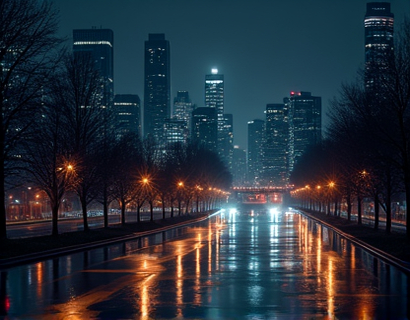Uncovering the Rich Cultural Heritage and Hidden Gems of the Ancient Indus Valley
The ancient Indus Valley, a cradle of one of the world's earliest civilizations, beckons curious travelers to explore its profound cultural heritage and uncover hidden treasures. Spanning across present-day Pakistan and northwestern India, this region offers a unique blend of history, archaeology, and natural beauty. This comprehensive travel guide is designed to provide detailed insights, practical travel tips, and local attractions to ensure a memorable journey through this historic area.
Historical Background and Significance
The Indus Valley Civilization, also known as the Harappan Civilization, flourished around 2600 BCE to 1900 BCE. It is one of the oldest urban civilizations in the world, alongside Mesopotamia and Egypt. The civilization is renowned for its advanced urban planning, sophisticated water management systems, and intricate craftsmanship. The cities of Harappa and Mohenjo-Daro, both located in present-day Pakistan, are the most extensively excavated sites and serve as a testament to the civilization's grandeur.
The Indus Valley Civilization was characterized by its well-planned cities with grid-like layouts, standardized weights and measures, and a script that remains undeciphered. The people of this civilization were skilled in metallurgy, pottery, and jewelry making. Their art and culture reflect a deep connection with nature and a high level of social organization.
Exploring the Major Archaeological Sites
Visitors to the Indus Valley should not miss the opportunity to explore its major archaeological sites. Mohenjo-Daro, one of the largest and best-preserved cities, offers a glimpse into the sophisticated urban planning of the Indus people. The Great Bath, a central public bathing facility, and the granaries, which indicate advanced storage techniques, are must-see attractions.
Harappa, another significant site, provides insights into the daily life and trade activities of the Indus people. The site includes a citadel, lower town, and a unique drainage system that was ahead of its time. The discovery of a seal depicting a seated yogi suggests a possible connection to yoga and meditation practices.
Other notable sites include Dholavira in Gujarat, India, known for its intricate water conservation systems, and Rakhigarhi, one of the largest but least excavated sites, which holds potential for uncovering more secrets of the Indus civilization.
Cultural Heritage and Local Traditions
Beyond the archaeological sites, the Indus Valley region is rich in cultural heritage and local traditions. The area is home to a diverse population with a blend of ethnicities and languages. Visitors can experience the vibrant local markets, where traditional crafts and textiles are sold, offering a chance to purchase unique souvenirs.
The cuisine of the Indus Valley is a delightful mix of flavors, influenced by both Indian and Pakistani culinary traditions. Dishes such as kebabs, biryani, and various vegetarian options made from locally sourced ingredients are must-tries. The region is also famous for its sweets, including jalebi and gulab jamun.
Local festivals and celebrations provide a window into the community's way of life. The festival of Eid and Diwali are widely celebrated, with colorful processions, traditional music, and dance performances. Visitors are encouraged to participate in these festivities to gain a deeper understanding of the local culture.
Natural Beauty and Outdoor Activities
The Indus Valley is not only rich in history but also boasts stunning natural landscapes. The Cholistan Desert, located in southern Pakistan, offers a stark contrast to the urban sites with its vast sand dunes and nomadic tribes. A visit to this desert can be an adventurous experience, with camel rides and overnight stays in desert camps providing a unique perspective of the region.
For nature enthusiasts, the Sindh Wildlife Sanctuary, also known as the Sanctuaries of the Indus, is a paradise. This protected area is home to a variety of wildlife, including the endangered Indus dolphin, and offers opportunities for bird watching and wildlife photography.
Hiking and trekking in the nearby hills and mountains, such as the Kirthar Range, provide a refreshing break from the heat and a chance to connect with nature. The scenic trails offer breathtaking views and a serene environment, perfect for a peaceful retreat.
Practical Travel Tips
Planning a trip to the Indus Valley requires some preparation to ensure a smooth and enjoyable journey. Here are some practical tips for travelers:
- Best Time to Visit: The cooler months from October to March are ideal for exploring the archaeological sites and enjoying outdoor activities.
- Transportation: Renting a car or joining a guided tour is recommended to navigate the region efficiently. Public transportation is limited in some areas.
- Accommodation: From luxury hotels to budget-friendly guesthouses, accommodation options vary. Booking in advance, especially during peak seasons, is advised.
- Dress Code: Dress modestly when visiting religious sites and local communities. Lightweight, breathable clothing is suitable for hot weather, while layers are necessary for cooler evenings.
- Health and Safety: Stay hydrated, use sunscreen, and carry a first-aid kit. Consult a doctor about necessary vaccinations before traveling.
- Respect Local Customs: Be mindful of local traditions and customs, especially when visiting religious sites or participating in local festivals.
Essential Resources for Travelers
For those planning to visit the Indus Valley, here are some essential resources to enhance your journey:
- Guidebooks: "The Indus Civilization" by Jonathan Mark Kenoyer and "Mohenjo-Daro and the Origin of Urban Civilization" by Ernest Mackay provide in-depth historical context.
- Travel Websites: Websites like Lonely Planet and TripAdvisor offer practical advice on destinations, accommodations, and activities.
- Local Tour Operators: Engaging with local tour operators can provide valuable insights and ensure a well-organized trip.
- Cultural Organizations: Organizations such as the Archaeological Survey of India and the Pakistan Archaeology Department offer resources and information on the region's heritage sites.
- Language Guides: Learning basic phrases in Urdu and Punjabi can be helpful, and carrying a translation app can assist in communication.
Conclusion
The Indus Valley is a treasure trove of history, culture, and natural beauty, offering a unique travel experience for the curious and adventurous. By delving into its ancient civilization, exploring its archaeological sites, immersing in local traditions, and enjoying the natural landscapes, visitors can gain a profound appreciation of this remarkable region. With careful planning and an open mind, the Indus Valley promises an unforgettable journey through time and culture.










































